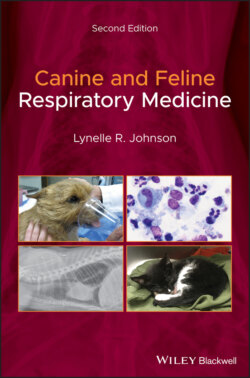Читать книгу Canine and Feline Respiratory Medicine - Lynelle Johnson R., Lynelle R. Johnson - Страница 50
Nasal Culture
ОглавлениеBacterial culture of nasal discharge is not recommended. In fact, since most infections in the nose are secondary rather than primary, the value of culturing a deep nasal flush or culturette sample can also be questioned because of the difficulty in distinguishing normal flora from pathogens or opportunistic invaders. Interpretation of bacterial cultures is more difficult in animals that have been on multiple courses of antibiotic trials because this tends to favor the development of resistant species. Despite this, bacterial culture from a deep nasal swab or flush can provide some direction for antibiotic therapy in cats with chronic rhinosinusitis. The easiest way to obtain a sample from the nose of a cat is to direct a sterile cytology brush (Cytosoft™, Medical Packaging Co., Panorama City, CA) into the ventral portion of the nasal cavity and gently twirl the brush to collect cells and secretions. A deep nasal flush can be performed by inserting an 8 French red rubber catheter halfway into the ventral portion of the rostral nasal cavity, occluding the soft palate digitally, and instilling and aspirating 1–2 ml of sterile non‐bacteriostatic saline. Culture for aerobic bacteria and Mycoplasma spp. is recommended.
A study on the utility of fungal cultures in the diagnosis of canine nasal aspergillosis reported moderate sensitivity (77%) but high specificity (100%; Pomrantz et al. 2007). In that study, the material submitted for culture was from a visualized fungal plaque and therefore a low number of false‐positive values would be expected. In cases of cryptococcosis, culture and speciation can be helpful in determining the epidemiology of the infection, although subclinical colonization of the nasal cavity has been reported in 7–14% of dogs and cats (Malik et al. 1997).
